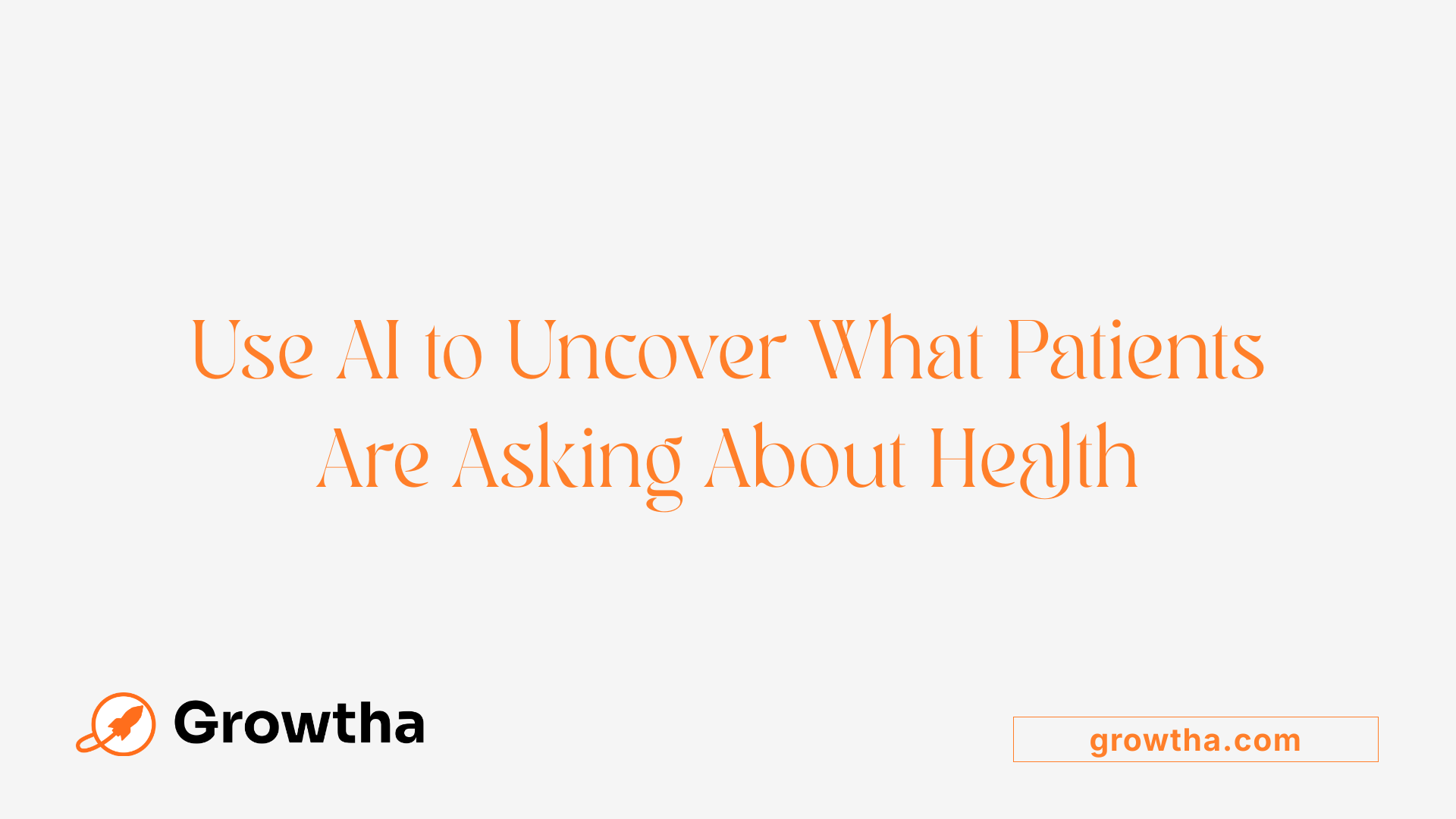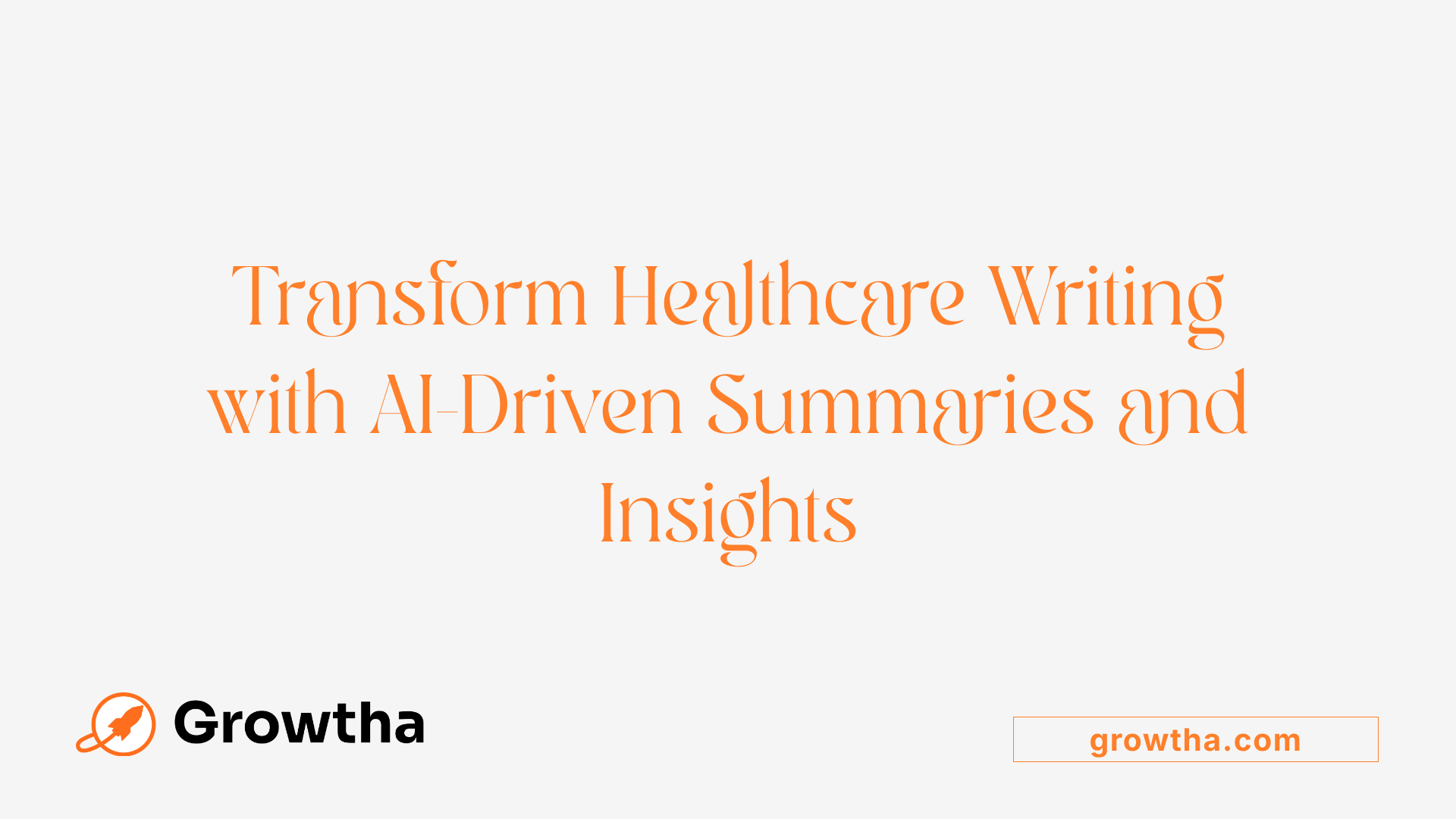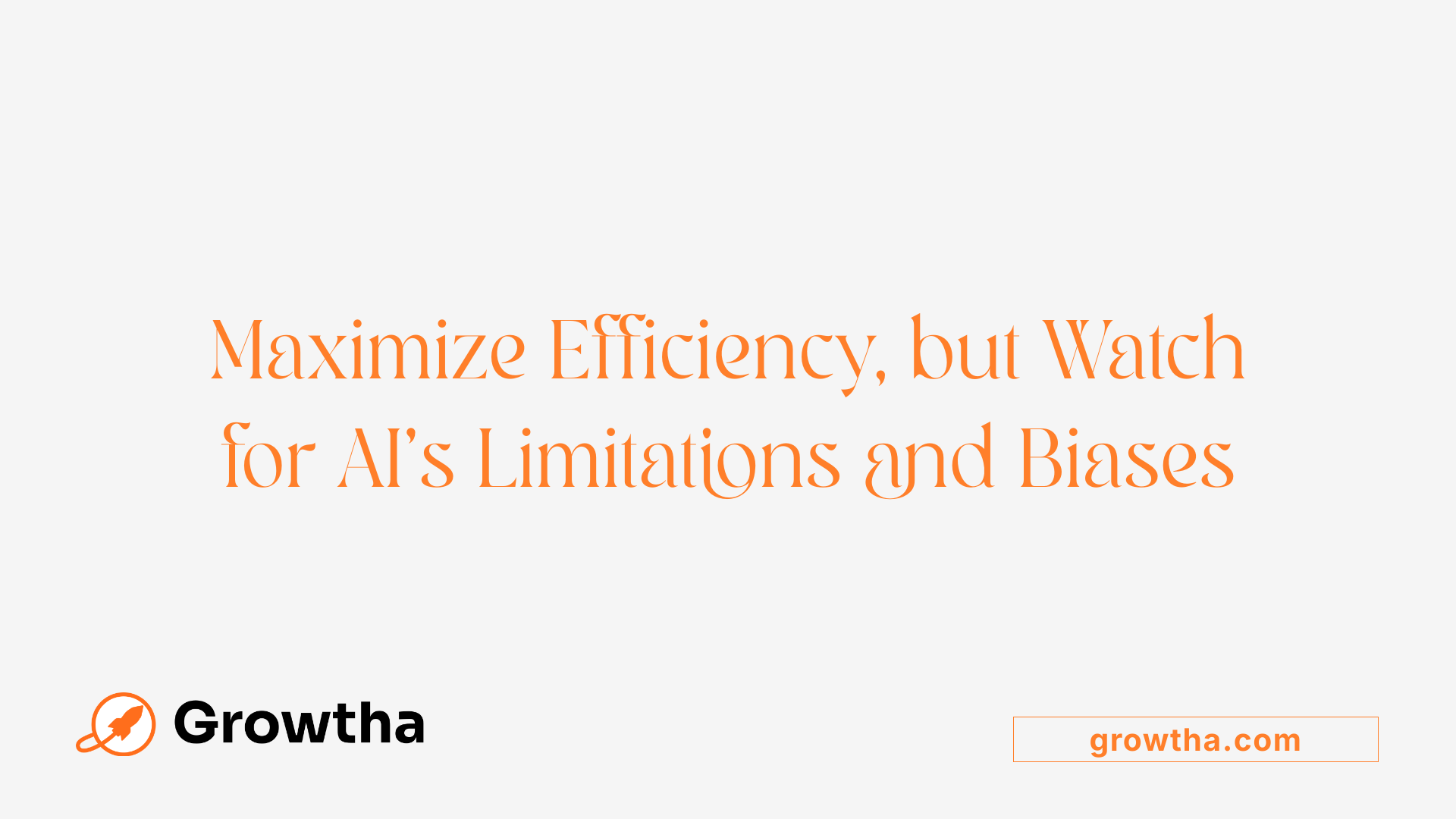Using AI to Generate Healthcare Blog Topics
Transforming Healthcare Communication with AI


Using AI to Generate Healthcare Blog Topics
Revolutionizing Content Creation in Medical Marketing
Artificial Intelligence is rapidly changing the landscape of healthcare communication, providing innovative solutions to generate engaging, accurate, and timely content. From assisting healthcare practitioners in creating blog topics to improving patient engagement, AI offers unprecedented opportunities to enhance how medical information is disseminated. This article explores how AI-powered tools and methods are shaping healthcare blogging, their benefits and limitations, future trends, and practical applications.
How AI Can Generate Healthcare Blog Topics

How can AI be used to generate healthcare blog topics?
Artificial Intelligence (AI) has become a powerful tool in healthcare content creation. It can analyze trending medical topics by accessing a vast range of online information sources, including research articles, news updates, and social media trends. This allows content creators to stay current and relevant.
AI can also identify common patient questions and concerns by scanning online forums, reviews, and Q&A platforms. This helps generate topics that resonate with what patients are actively seeking to understand about health conditions and treatments.
Leveraging AI for sourcing medical data is highly efficient. It can synthesize information from credible online resources, ensuring the content is accurate and evidence-based. This way, healthcare professionals and marketers can produce material that reflects the latest medical advances and guidelines.
To improve visibility on search engines, AI tools assist in keyword research and optimization. They help identify high-volume search terms and incorporate them naturally into content, boosting search engine rankings and increasing organic traffic.
Targeting specific audience segments is another advantage. AI can analyze demographic data and user behavior to tailor content to particular audiences, whether they are medical professionals, patients, or caregivers.
Despite the benefits, it's essential to review AI-generated topics and content for accuracy. AI’s understanding of complex medical concepts is still evolving, and mistakes could lead to misinformation. Human oversight ensures that the final output maintains high quality and reliability.
By combining AI’s rapid data analysis and trending topic identification with careful human review, healthcare marketers can efficiently produce timely, relevant, and engaging blog content that meets both informational and strategic goals.
Methods and Applications of AI in Healthcare Content Creation

What are the methods and applications of AI in healthcare content creation?
Artificial Intelligence (AI) employs various advanced methods to revolutionize how healthcare information is generated and shared. Among these, natural language processing (NLP), machine learning, and deep learning stand out as fundamental techniques that facilitate the creation of accurate, timely, and personalized medical content.
Natural language processing allows AI systems to understand, interpret, and generate human language. This capability enables the automation of tasks such as summarizing complex medical research and transforming technical data into patient-friendly language. Machine learning models, especially deep learning networks, analyze vast datasets to identify patterns, supporting diagnostics, treatment recommendations, and the drafting of medical reports.
Large language models (LLMs), like GPT-based systems, have further refined these capabilities. They can comprehend lengthy texts, provide relevant summaries, and even predict content needs. This makes them invaluable for creating educational materials, clinical guidelines, and research summaries. They also support developing content tailored to specific audiences, enhancing patient engagement, and medical professional communication.
Applications of AI extend across multiple facets of healthcare communication. AI-driven chatbots and virtual health assistants are now used to engage patients directly, assisting with symptom triage, appointment booking, and answering health questions. These tools are designed to make healthcare information more accessible and personalized, often based on an individual’s medical history and preferences.
In research and clinical practice, AI helps develop comprehensive medical guidelines by analyzing large datasets, including clinical trial results and patient records. AI-generated drafts support medical writers in producing accurate, evidence-based articles and blogs efficiently, which is critical during health crises or rapidly changing medical landscapes.
The integration of AI-powered tools into medical content creation has numerous benefits. These include improved accuracy by reducing human bias, increased speed of content production, and enhanced personalization for different patient demographics and healthcare providers.
However, it remains essential for human experts to review AI-generated content to ensure correctness, relevance, and cultural sensitivity. The continuous evolution of AI technologies, particularly in prompt engineering and multimodal learning, promises even more sophisticated tools capable of producing content that closely mimics human nuance.
In summary, AI techniques such as NLP, machine learning, and LLMs are transforming healthcare communication by automating content generation, supporting clinical decision-making, boosting patient engagement, and enabling the swift dissemination of medical knowledge. These innovations are central to advancing healthcare delivery, ensuring information accuracy, and improving patient outcomes.
Benefits and Limitations of AI-generated Healthcare Content

What are the benefits and limitations of AI-generated healthcare content?
AI technology is transforming healthcare communication by enabling the rapid creation of accurate and up-to-date content for websites, blogs, and social media platforms. One major advantage is enhanced efficiency and cost reduction. AI tools can quickly access vast amounts of medical information, perform keyword research, and generate draft content, freeing up healthcare practitioners to dedicate more time to direct patient care.
AI also facilitates real-time updates and personalized information. With access to current research and data, AI can produce content that reflects the latest medical developments. Additionally, AI-powered chatbots and virtual health assistants support patient engagement by assisting with triage, appointment scheduling, and answering common health questions.
A significant benefit concerns improved diagnostic and predictive analytics. By learning from large datasets, AI systems assist clinicians in diagnosing diseases, predicting patient outcomes, and supporting personalized treatment plans. In drug development, AI accelerates discoveries, making therapies more targeted.
Despite these advantages, there are notable limitations and risks. One major concern is the potential for inaccuracies and hallucinations—instances where AI may produce plausible but incorrect information. Since AI models generate content based on patterns, they can sometimes produce false or misleading details if not properly supervised.
Biases embedded in training data can lead to disparities and unfair outcomes. If AI algorithms are trained on non-representative datasets, they may perpetuate racial, gender, or regional biases, adversely affecting certain patient groups.
Ethical considerations also come into play, especially around authorship and accountability. If AI-generated content influences medical decisions, questions arise about responsibility for errors. Ensuring transparency and human oversight is essential.
Security and privacy concerns are critical, given the sensitive nature of health data. Protecting patient information from breaches and misuse is paramount, requiring robust encryption and compliance with regulations like HIPAA.
To maximize benefits while mitigating risks, human review remains vital. Content generated by AI should be scrutinized by healthcare professionals before publication to uphold quality and correctness.
The development of prompt engineering—crafting precise instructions for AI systems—is emerging as a way to improve output relevance and accuracy. As AI continues to evolve rapidly, future systems may produce content indistinguishable from human writing, further supporting healthcare providers.
In summary, AI-driven healthcare content creation offers significant advantages in speed and personalization, but it must be carefully managed to address ethical, accuracy, and security challenges. Combining AI with human expertise ensures responsible, effective communication within modern healthcare environments.
The Role of Generative AI and Large Language Models in Medical Content Creation
What role do generative AI and large language models play in creating medical content?
Generative AI and large language models (LLMs) have become transformative tools in the healthcare sector, especially in the realm of medical content creation. These advanced systems are capable of producing accurate, coherent, and contextually relevant materials such as articles, patient education content, blog posts, and social media updates. They significantly boost the speed and efficiency of content development, enabling practitioners and organizations to disseminate information swiftly.
In real healthcare settings, these AI models assist in extracting detailed medical information from vast datasets, including scientific literature, electronic health records, and clinical notes. They facilitate summarization of complex case histories and research findings, making it easier for medical professionals and patients to understand intricate medical details. Additionally, AI supports automated review processes for medical-legal documents, ensuring compliance and reducing manual workload.
Modern AI systems, including those developed by cloud providers like AWS, incorporate interactive features that allow subject matter experts to guide and fine-tune content outputs. This helps maintain accuracy and relevance, while also adhering to regulatory standards.
Looking beyond straightforward content creation, generative AI is instrumental in producing synthetic medical data for research, enhancing diagnostic imaging, assisting in drug discovery, and providing clinical decision support. For example, AI-generated simulated datasets are used to train machine learning models without compromising patient privacy.
However, utilizing AI in healthcare requires careful oversight. Ensuring factual accuracy involves implementing fact-checking protocols and rule-based evaluations. Ethical concerns, such as bias, misinformation, and privacy violations, must be addressed through proper governance and regulatory compliance.
Ultimately, the deployment of AI and large language models in medicine aims to supplement human expertise, accelerate knowledge dissemination, enhance research, and improve patient outcomes. As these models evolve, their capacity to generate indistinguishably human-like content enhances their utility, but it also underscores the need for rigorous quality control and ethical safeguards.
For more information, searching "Generative AI large language models medical content" yields a wealth of resources on current applications and future potentials of these transformative tools.
The sophisticated capabilities of AI systems continue to shape the future of healthcare, blending technological innovation with clinical expertise to advance medical science and patient care.
Practical Examples of AI Tools for Healthcare Marketing
What are practical examples of AI tools for healthcare marketing?
Healthcare providers and marketers are increasingly integrating artificial intelligence to enhance their digital outreach and patient engagement efforts. Here are some real-world AI tools making a difference today.
One prominent application is through AI-powered chatbots, such as Ivy.ai and Hyro. These chatbots are designed to interact directly with patients via websites or social media platforms. They can answer common health inquiries, provide information about services, and assist with appointment scheduling. This instant, 24/7 engagement improves the patient experience and reduces the workload on front-office staff.
Conversation intelligence platforms like CallRail are also gaining traction. These tools record and analyze patient conversations to extract valuable insights. By assessing how patients discuss symptoms or concerns, healthcare marketers can refine their messaging strategies, identify common issues, and reduce marketing costs through targeted campaigns.
Predictive analytics tools are vital for forecasting campaign outcomes and optimizing resource allocation. Platforms such as SAP Predictive Analytics and Vertex AI utilize large datasets to identify patient segments likely to respond to specific messages. They enable more precise targeting, increasing the efficiency of marketing efforts.
Content creation platforms like ChatGPT and Jasper.ai help generate personalized health messages, newsletters, or social media content. They facilitate rapid development of engaging and relevant materials tailored to different audience segments, saving time and maintaining consistency.
Automation tools such as Keragon support campaign management by automating routine tasks like follow-up emails, appointment reminders, and data entry. These platforms streamline workflows, allowing healthcare providers to focus more on patient care.
These AI solutions collectively contribute to better targeting, personalization, operational efficiency, and continuous patient engagement, transforming healthcare marketing into a more efficient and patient-centered process.
Future Trends and Ethical Considerations in AI for Healthcare Blogging
What are future trends and developments in AI for healthcare blogging?
The future of AI in healthcare blogging looks promising with the integration of advanced technologies like multimodal and generative AI systems. These innovations will enable more accurate diagnostics, personalized treatments, and comprehensive workflows.
Multimodal AI combines data from various sources such as medical imaging, genomics, and patient histories to offer richer insights. Meanwhile, generative AI can produce detailed, context-aware content, enabling healthcare providers to communicate complex health information more effectively.
Automation will also play a significant role, streamlining routine tasks like administrative paperwork, patient monitoring, and clinical documentation. This reduces the burden on clinicians and allows more focus on patient care.
Cloud computing advances will facilitate the deployment of AI at scale, offering real-time insights. Autonomous decision-making agents and virtual health assistants will become more common, promoting proactive healthcare management.
Regulatory bodies and investors are expected to increase their focus on developing safe, ethical AI tools. Innovations such as ambient listening devices and synthetic data will help address workforce shortages and enhance patient engagement.
Overall, these advances aim to support the quadruple aim—improving patient outcomes, increasing patient experience, reducing healthcare costs, and boosting provider satisfaction.
Are there ethical considerations when using AI to write healthcare blogs?
Yes, deploying AI for healthcare content creation brings several ethical concerns that must be carefully managed.
One primary issue is ensuring the content's accuracy and reliability. Misinformation can harm patients or mislead the public, so rigorous validation and human review are essential before publishing.
Transparency about AI's role in generating content is also critical, maintaining trust with audiences. Disclosing AI involvement helps uphold honesty and accountability.
Biases embedded within AI models can perpetuate health disparities. Continuous monitoring and updates are necessary to mitigate such biases.
Privacy concerns are paramount, especially if AI systems utilize sensitive health data. Safeguarding patient information through secure protocols and obtaining proper consent is crucial.
Maintaining professional standards—such as honesty, accountability, and empathy—is vital, even when AI contributes to content creation. AI cannot replace the human touch, particularly in healthcare communications.
In conclusion, responsible AI use in healthcare blogging requires strict oversight, adherence to ethical guidelines, and ongoing evaluation to ensure public trust and patient safety.
Emerging Technologies and Data Integration
Future developments include the blending of diverse healthcare data sources, such as real-time clinical data, imaging, genomic information, and patient-generated health data. This integrated approach will support more holistic and personalized communication strategies.
Automation and Cloud-Based Solutions
Automation of clerical and clinical tasks using AI will reduce workload and improve accuracy. Cloud platforms will support large-scale deployment, enabling healthcare providers to access AI tools from anywhere.
Regulatory and Investment Trends
Growing investments and evolving regulations will promote safer AI deployment, emphasizing safety, fairness, and privacy.
Addressing Workforce Challenges and Patient Engagement
AI-powered tools like virtual assistants and remote monitoring will help mitigate staffing shortages and foster higher patient participation in their health management.
Ethical and Safety Challenges
Developing and implementing AI therapies involves ensuring data quality, fairness, transparency, and security standards.
| Aspect | Focus | Details |
|---|---|---|
| Technological Innovations | Multimodal & Generative AI | Enhance diagnostics and content creation |
| Data Integration | Diverse Healthcare Data | Enable personalized communications |
| Automation | Administrative & Clinical Tasks | Improve efficiency and reduce clinician burden |
| Regulation & Investment | Healthcare AI | Promote safe and controlled adoption |
| Workforce & Engagement | AI Chatbots & Virtual Assistants | Address labor shortages; improve patient experience |
| Ethical Considerations | Accuracy, Bias, Privacy | Ensuring trustworthy, fair, and secure AI use |
This ongoing evolution in AI capabilities and responsible implementation will shape the future of healthcare communication. As the technology matures, healthcare professionals and organizations must stay attentive to ethical standards and regulatory updates—ensuring AI's benefits are maximized while risks are minimized.
Harnessing AI for Better Healthcare Communication
AI is revolutionizing healthcare content creation, offering tools that improve efficiency, personalization, and accuracy while presenting new challenges related to ethics and quality assurance. As AI continues to evolve, collaboration between technologists, medical professionals, and ethicists will be essential to harness its full potential responsibly. By adhering to best practices, including thorough review processes and ethical guidelines, healthcare providers can leverage AI to produce impactful blogs and educational materials that inform and empower patients and practitioners alike. The future of AI in healthcare communication is promising—driving forward innovation that ultimately enhances patient care and clinical outcomes.
References
- Should You Use Artificial Intelligence To Create Medical Content For ...
- Artificial intelligence in healthcare: transforming the practice of ...
- AI Writing Solutions for Healthcare Bloggers & Medical Writers
- Should You Use Artificial Intelligence To Create Medical Content For ...
- Artificial intelligence in healthcare: transforming the practice of ...
- Artificial intelligence in healthcare: transforming the practice of ...
- Revolutionizing healthcare: the role of artificial intelligence in clinical ...
- Artificial intelligence in healthcare delivery: Prospects and pitfalls







